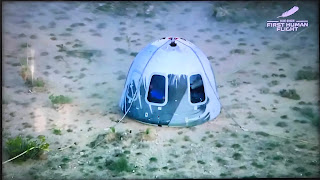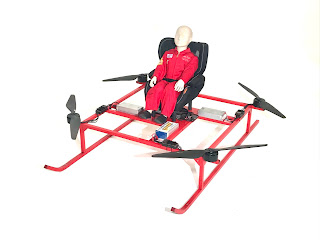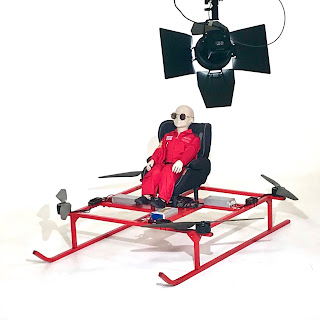I've dropped in at the museum in Oshkosh many years ago, and enjoyed a gala evening at the Hiller Museum as recently as last. What do they both have in common? Each now include among their inventory prototypes of Opener's Blackfly, whose proof of concept is seen first flying (at left) in October of 2011, though inventor Marcus Leng dates the idea to 2009.
Marcus originates from Canada but has moved since to California, in the footsteps of the other great VTOL pioneer, Paul Moller. Both have been engaged over many years in the application of vertical flight to fixed wing types. If only to highlight how far ahead of the game the Blackfly is, the models at centre and right above were constructed in May and June of the following year... I dicking around as ever with balsa and foam at the same time as Marcus was elevating his backside above the lawn.
I only ever envisaged using the configuration in ground-effect (or surface-effect as I'd intended it for water and got as far as launching a half-scale prototype on the Leeds to Liverpool canal). Never in my wildest dreams did I imagine it operating in free flight, and in fact a key element of that is computerised control of the thrust at each point.
For the record, like most foam models this one was decidedly unstable from the get-go and pitched into a somersault given a headwind and uniform thrust applied across all four motors. This in no small part would explain why a dozen years on and with the benefit of Larry Page's input, the fabulous Blackfly is only now slated for sales.
Most inventions are happenstance, and it was Edison who said that no sooner had he introduced another than any number of people emerged from the woodwork to claim they'd had the same idea. Ideas are two a penny, however, whilst the execution is all.
For myself, like most pilots I was never able ever to really choose between air and sea. Looking at these models nearly ten years on, I may re-visit the one on the right as a means of flying over water now things have moved on electrically.
The benefit of the Blackfly's aerofoils are that ~ being blown ~ they tolerate a wider range of pitch angles without separation and stall. Ground-effect's advantages are similar, by its suppression of wingtip vortex, and like vertical flight I fear its siren call as much as ever.























